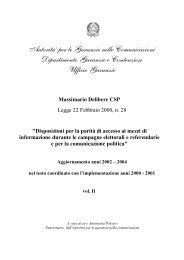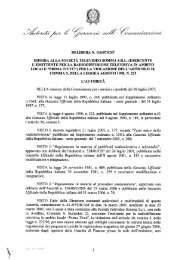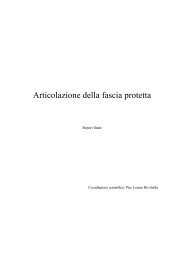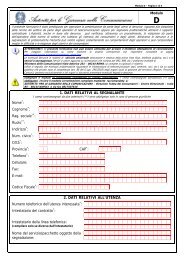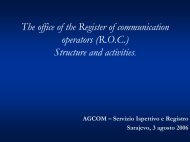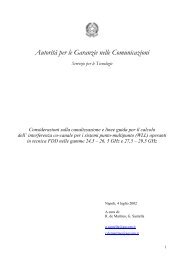Communications Regulatory Authority
Communications Regulatory Authority
Communications Regulatory Authority
Create successful ePaper yourself
Turn your PDF publications into a flip-book with our unique Google optimized e-Paper software.
egulations but also during such interruptions in sports games as can be added to the<br />
prescribed duration of the playing time, provided that the insertion of an advertisement<br />
does not interrupts a sports action. In the administrative judge’s opinion, this provision,<br />
which is based on a “non-technical” interpretation of the world “half-times” included in<br />
article 11 of Directive no. 89/552/EEC, i.e. a more extensive interpretation compared to<br />
the mere indication of an intermission dividing halves of a game, operates “from a<br />
perspective aimed at maintaining the integrity and value of a programme by setting out<br />
an objective and unequivocal principle, and one that is not left to a broadcaster’s<br />
discretion or arbitrary evaluation”. Still according to the Lazio TAR’s judgement,<br />
rather than deviating from EEC rules and regulations, this regulation explains and<br />
clarifies their content with more stringent and restrictive enforcement boundaries (Lazio<br />
TAR, section II no. 14965/05, quoted above).<br />
With special reference to the recent amendment to the quoted regulations, as<br />
provided for by Resolution no 105/05/CSP, which set for football games a maximum<br />
number of 6 minispots within the regular playing time, the Lazio TAR considered such<br />
regulatory action to be “implementing and consequential to the rule of principle<br />
included in the EEC directive” (see Directive no. 89/552/EEC, and subsequent<br />
amendments, quoted above) “and making its implementation and specification a clear<br />
and effective one with regard to the section where minispots are considered as<br />
exceptional advertisements, a section which would otherwise be bound to remain<br />
undetermined”.<br />
The judge also added that “the 6-minispot limit” set by AGCOM “is entirely<br />
reasonable as it is clear that a higher number, to be broken down into two 45-minute<br />
halves, would not allow to consider minispots as isolated ads.” (Lazio TAR, section II,<br />
no. 14357/05, quoted above).<br />
Still with regard to the audiovisual sector, in confirming Lazio TAR’s judgement<br />
no. 184/2005, the Council of State stated that AGCOM has the power to issue directives<br />
on service charters under article 1, paragraph 6, letter b, no. 2 of law no. 249/97 also<br />
with respect to private undertakings which work in the telecommunications field<br />
(Council of State, Order no. 3147/05). As, in mentioning operators, this provision does<br />
not specify that it should be public service operators, or that it should be a public service<br />
charter, it shall apply to all telecommunications and radio and television service<br />
operators which provide either public or entrepreneurial services.<br />
In the Council of State judges’ opinion, for the purpose of interpreting article 1,<br />
paragraph 6, letter b, no. 2 of law no. 249/97 the word “operator” cannot have a strict<br />
interpretation, one that is limited to the operator of a business necessarily having a<br />
public-service nature, but it should be interpreted in a wider sense, such as to refer to<br />
any undertaking operating in the telecommunications sector on the basis of a widening<br />
measure issued by the <strong>Communications</strong> <strong>Regulatory</strong> <strong>Authority</strong>. In this connection the<br />
Council of State added that such a pay-tv operator as Sky, which also provides<br />
television news, carries out tasks which can qualify, at least partly, as public service, by<br />
206




